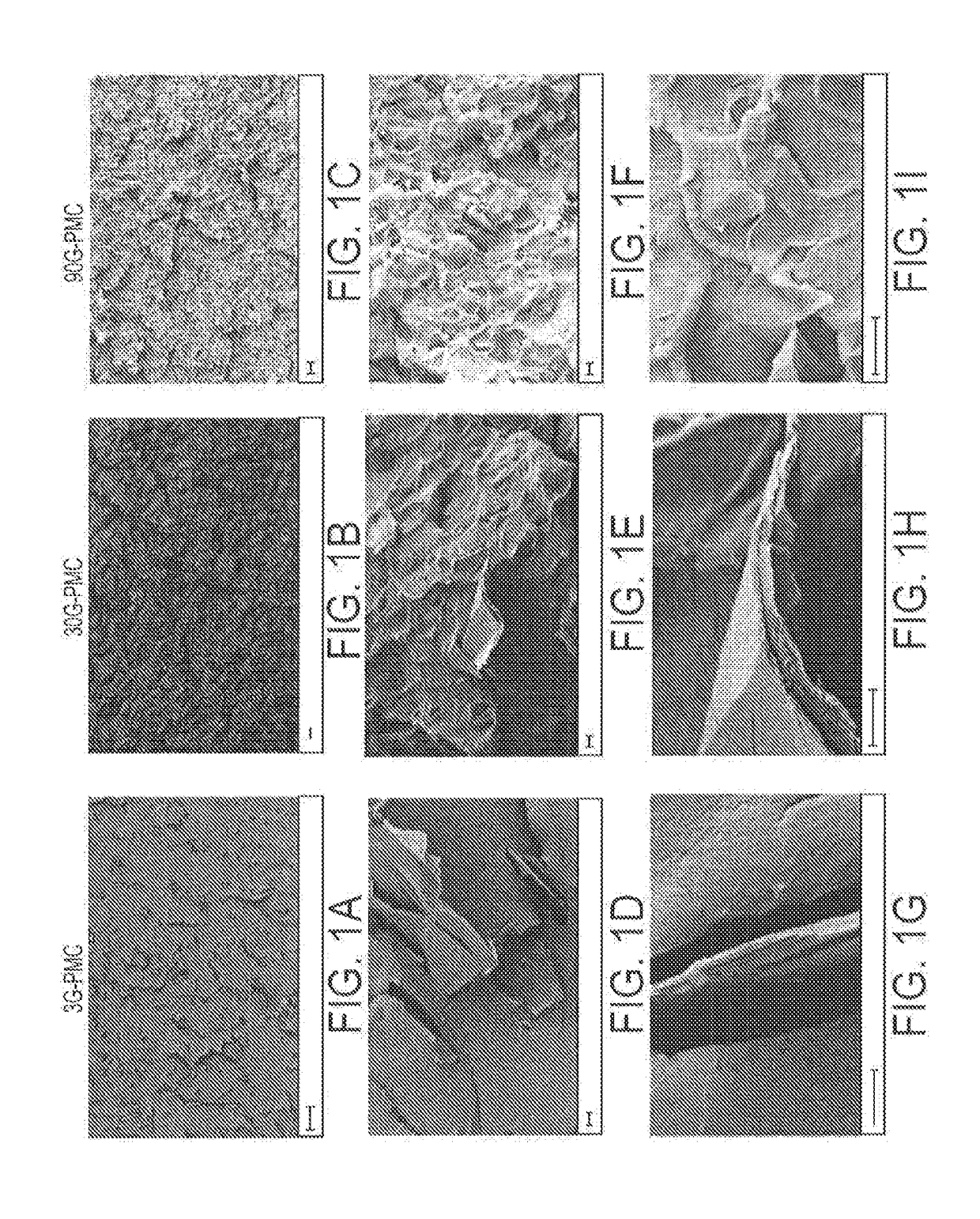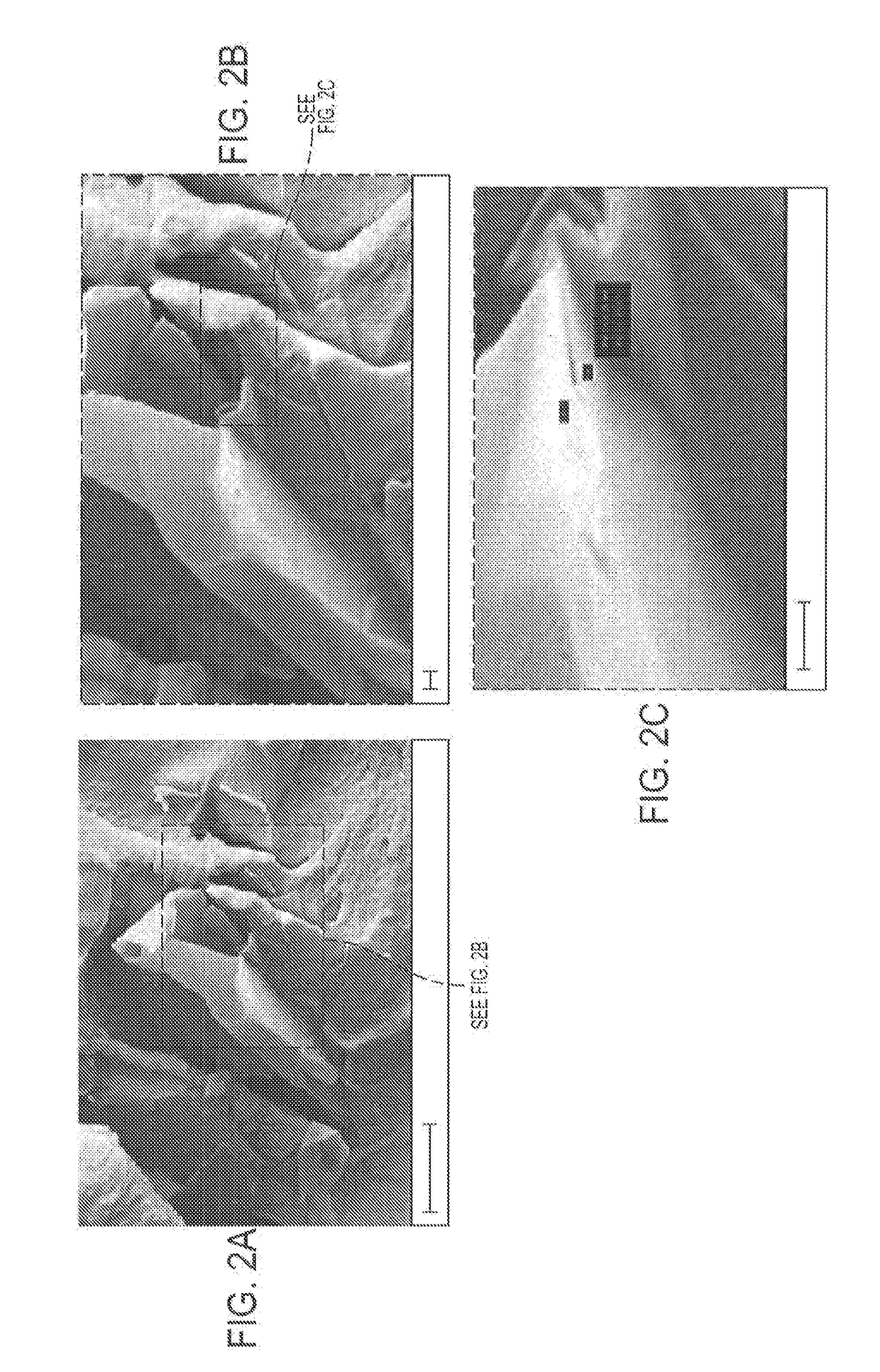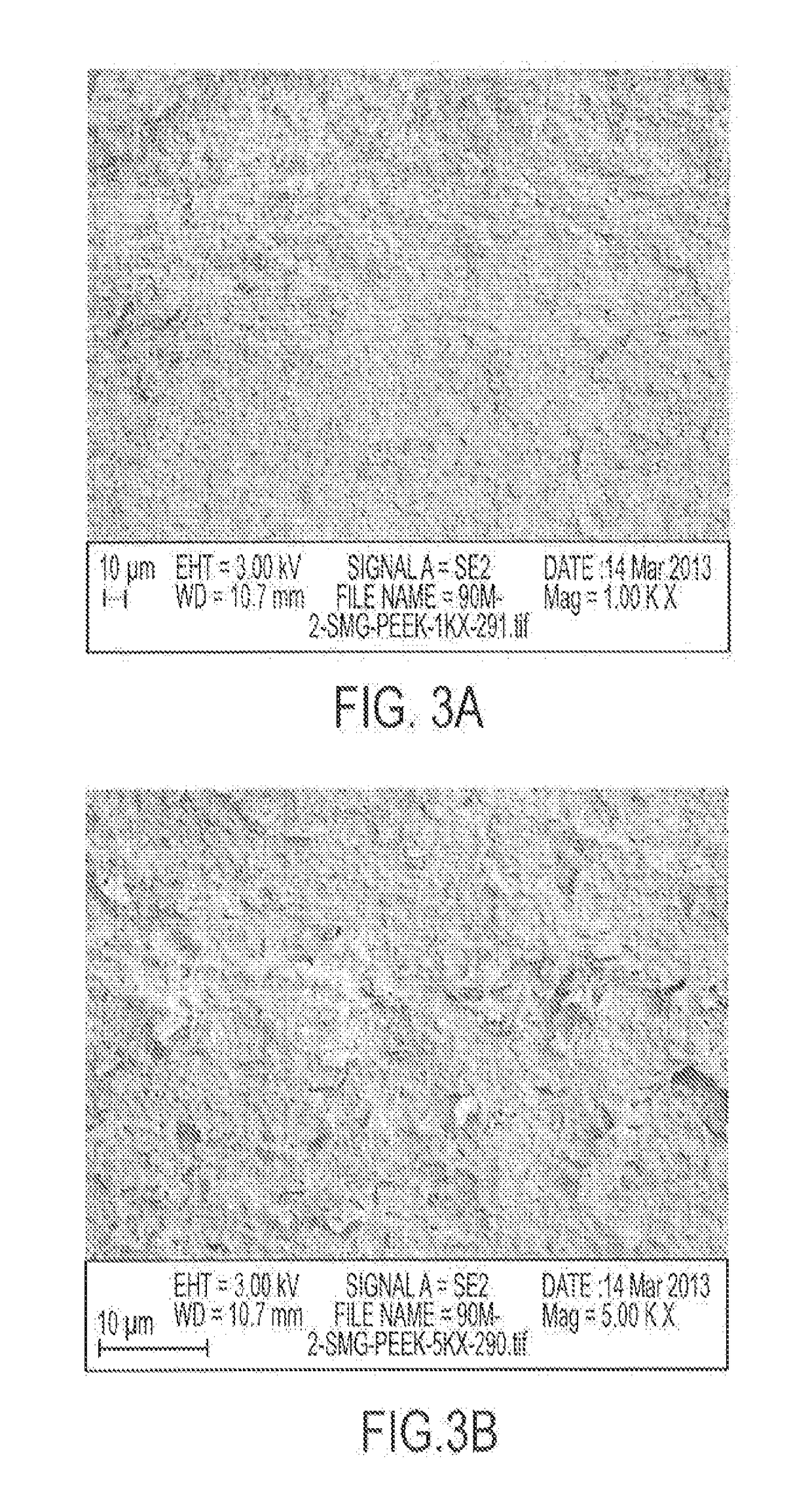Graphene-Reinforced Polymer Matrix Composites
a graphene-reinforced polymer and composite technology, applied in single-layer graphene, chemistry apparatus and processes, transportation and packaging, etc., can solve the problems of insufficient intrinsic strength of a significant number of polymeric materials, slow progress in the development of low-cost methods to effectively produce graphene-reinforced polymer matrix composites, and the inability to meet the requirements of real-world applications. achieve the effect of improving the mechanical properties of bulk polymer
- Summary
- Abstract
- Description
- Claims
- Application Information
AI Technical Summary
Benefits of technology
Problems solved by technology
Method used
Image
Examples
example 1
on of Graphene-Reinforced Polysulfone (G-PSU)
[0102]In one embodiment, a small scale extension mixer with a 10-gram capacity was used to compound 2% of SMG with Udel P-1700 Polysulfone (PSU) at 332° C. (630° F.) and under vacuum for 3, 30, and 90 minutes. The method is described below. Samples collected for characterization after each length of time are referred to as 3G-PMC, 30G-PMC, 90G-PMC.[0103]1. 9.8 grams of PSU were added to the mixer and allowed to become molten.[0104]2. 0.2 grams of SMG were added to the molten PSU and mixed.[0105]3. After 3 minutes of mixing time, 3 grams of the G-PMC were extruded out of the mixer and collected for characterization.[0106]4. 3 grams of 2% SMG in PSU was added to the mixer and mixed.[0107]5. After 30 minutes of mixing time, 3 grams of the G-PMC were extruded out of the mixer and collected for characterization.[0108]6. 3 grams of 2% SMG in PSU was added to the mixer and mixed.[0109]7. After 90 minutes of mixing time, 3 grams of the G-PMC were...
example 2
y Analysis
[0110]A Zeiss Sigma Field Emission Scanning Electron Microscope (FESEM) with Oxford EDS was used to determine the degree of mechanical exfoliation of graphite into multi-layer graphene or graphene nanoparticles and the thickness of these particles. An accelerating voltage of 3 kV and working distance of approximately 8.5 mm was used during viewing. Prior to viewing, specimens from each sample of 3G-PMC, 30G-PMC, and 90G-PMC were notched, cryogenically fractured to produce a flat fracture surface, placed under vacuum for at least 24 hours, gold coated, and stored under vacuum.
Morphology Results
[0111]The morphology of each sample, 3G-PMC, 30G-PMC, and 90G-PMC, at three different scales (magnification) is shown in FIG. 1. In (a-c), a 20 μm scale and 1,000× magnification shows good distribution of multi-layer graphene or graphene within the PSU matrix at each mixing time. In (d-f), a 1 μm scale and 10,000× magnification and (g-i), a 1 μm scale and 50,000× magnification shows m...
example 3
fraction Analysis (XRD)
[0113]XRD analysis on each sample of 3G-PMC, 30G-PMC, and 90G-PMC includes four steps: (1) sample preparation, (2) diffraction pattern acquisition, (3) profile fitting, and (4) out-of-plane (D) crystallite sizes calculation according to the Debye-Scherrer equation.[0114]1. The samples for XRD analysis were prepared by pressing thin films of each sample 3G-PMC, 30G-PMC, and 90G-PMC at 230° C. and 5,500 psi over a 2 minute time period. Each sample was positioned between aluminum sheets prior to pressing using a Carver Uniaxial Press with heated platens.[0115]2. Diffraction patterns of the pressed films were acquired using a Philips XPert powder Diffractometer with sample changer (Xpert) at 40 kV and 45 mA with an incident slit thickness of 0.3 mm from 4°-70° 2θ and a step size of 0.02° 2θ.[0116]3. Diffraction patterns were uploaded into WinPLOTR Powder diffraction graphics tool, without background editing or profile adjustments prior to peak fitting. Single peak...
PUM
| Property | Measurement | Unit |
|---|---|---|
| thick | aaaaa | aaaaa |
| thick | aaaaa | aaaaa |
| thick | aaaaa | aaaaa |
Abstract
Description
Claims
Application Information
 Login to View More
Login to View More - R&D
- Intellectual Property
- Life Sciences
- Materials
- Tech Scout
- Unparalleled Data Quality
- Higher Quality Content
- 60% Fewer Hallucinations
Browse by: Latest US Patents, China's latest patents, Technical Efficacy Thesaurus, Application Domain, Technology Topic, Popular Technical Reports.
© 2025 PatSnap. All rights reserved.Legal|Privacy policy|Modern Slavery Act Transparency Statement|Sitemap|About US| Contact US: help@patsnap.com



